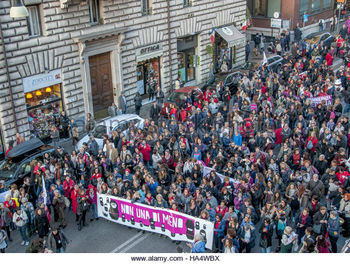Italy is a catholic country, and to this end, doctors are legally allowed to refuse to conduct abortions on moral grounds. Only 1 in 7 doctors will perform abortions in Italy, so women often need to travel for hours to find one that is willing. This demonstration was a response to the institutional and structural misogyny that causes violence against women. Gender violence is a problem that is bigger than the individual perpetrators. For this reason, the women in Non Una Di Meno and their supporters chose to march in the streets of Rome to demonstrate that they would not tolerate this anymore.
Most media stations did not cover this demonstration of around 200,000 people, as the Italian government does not support these groups and has not accepted any of their demands. Non Una Di Meno additionally faces opposition from the religious sector, including various pro-life groups. However, as the protest was so large in numbers, these groups did not overpower it.
The women made demands on using education as a tool against violence, changes to the law for labour and welfare, as well as reproductive rights, and changes to female representation in the media. They presented these at a national assembly the day following the protest. The demands were put together under a National Anti-Violence Plan, however, no immediate action was taken by the government, and no changes to the law were made. These women continue to fight for these rights today, and make demands to the government each year in the fall.

